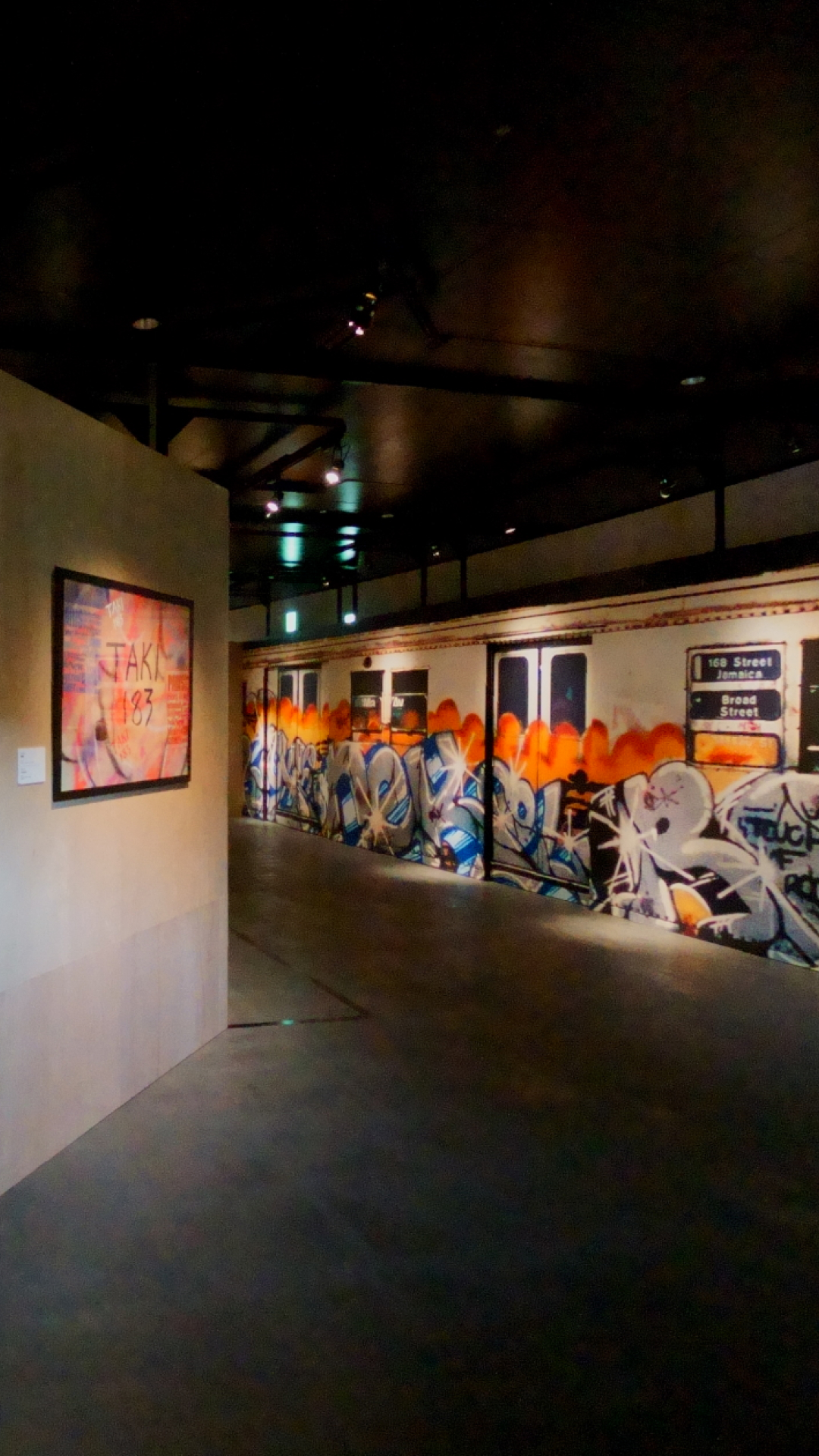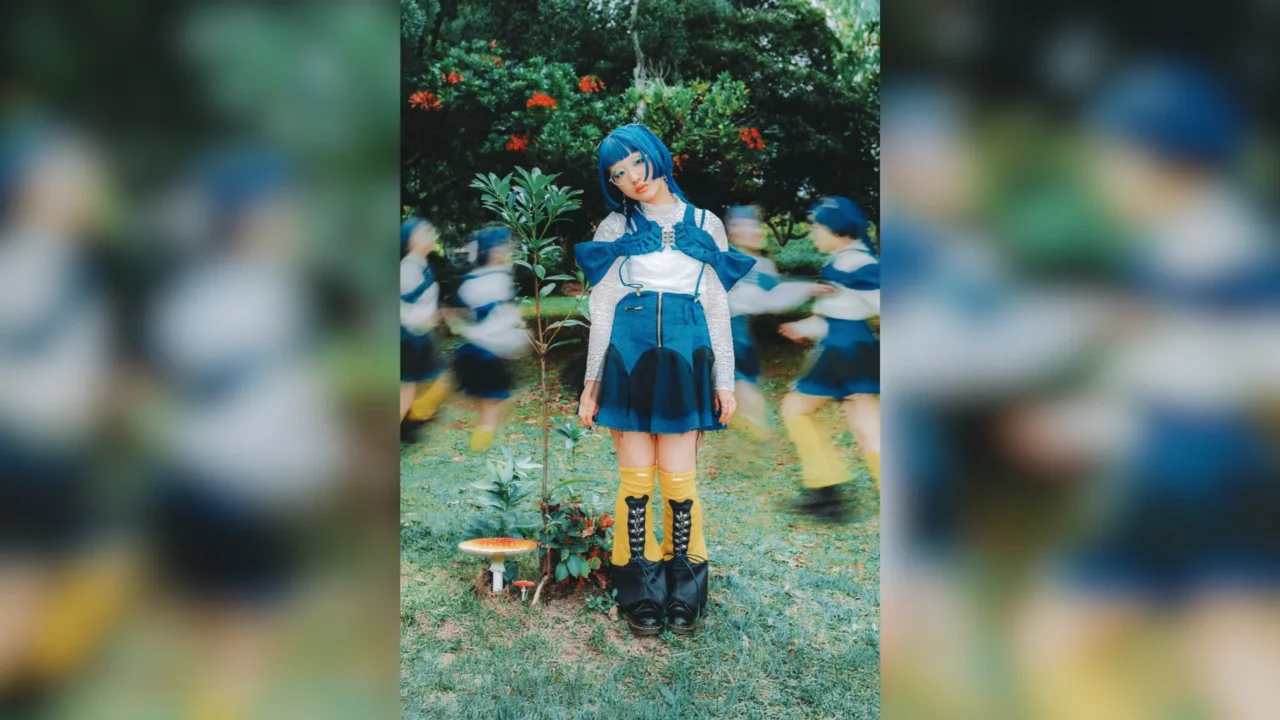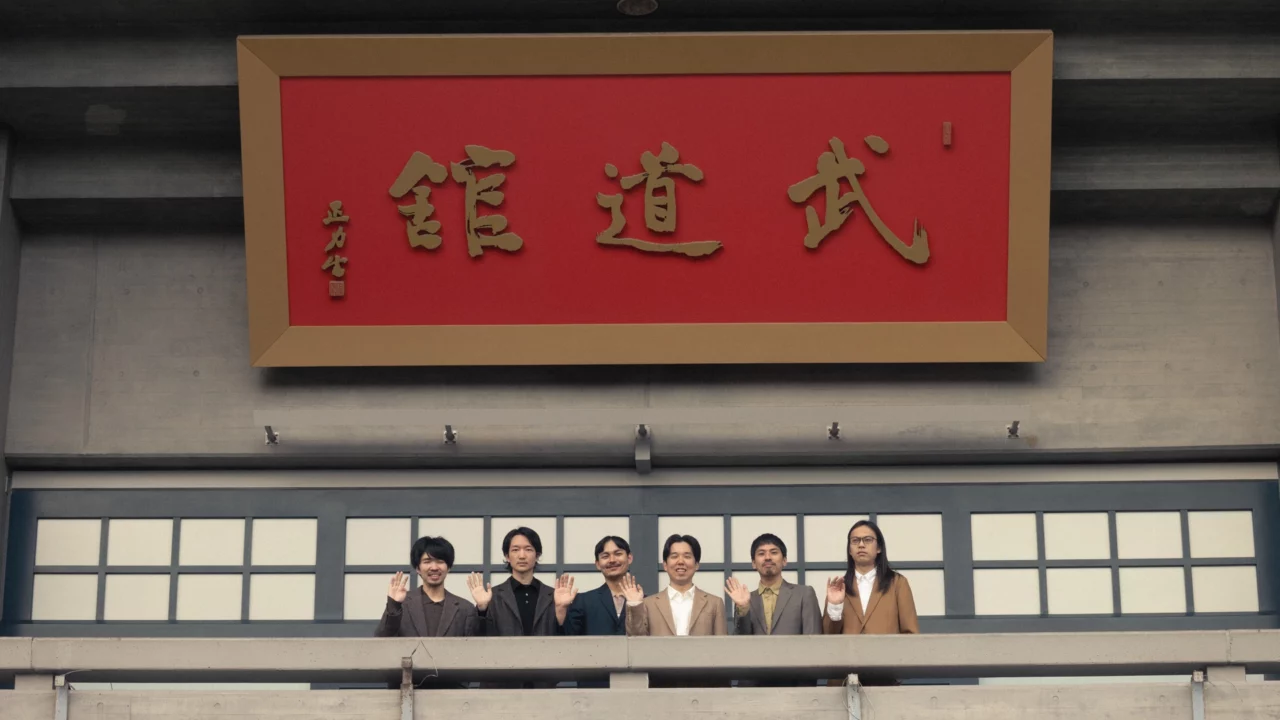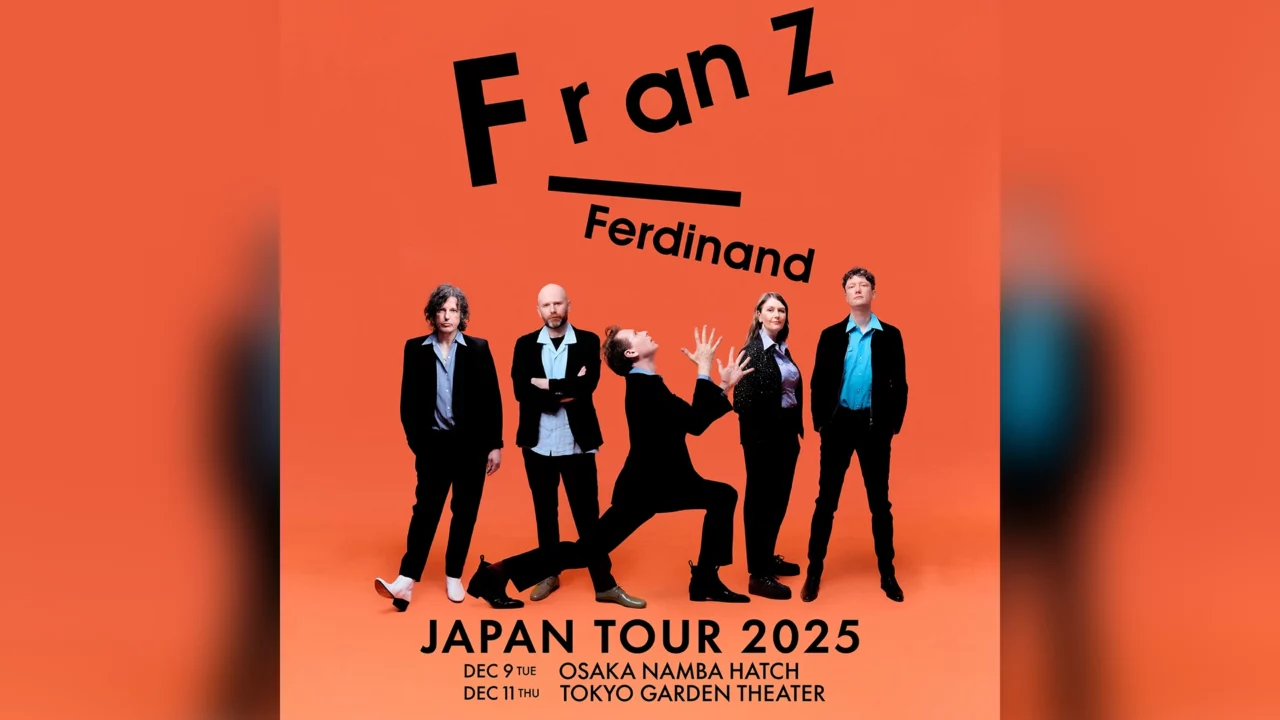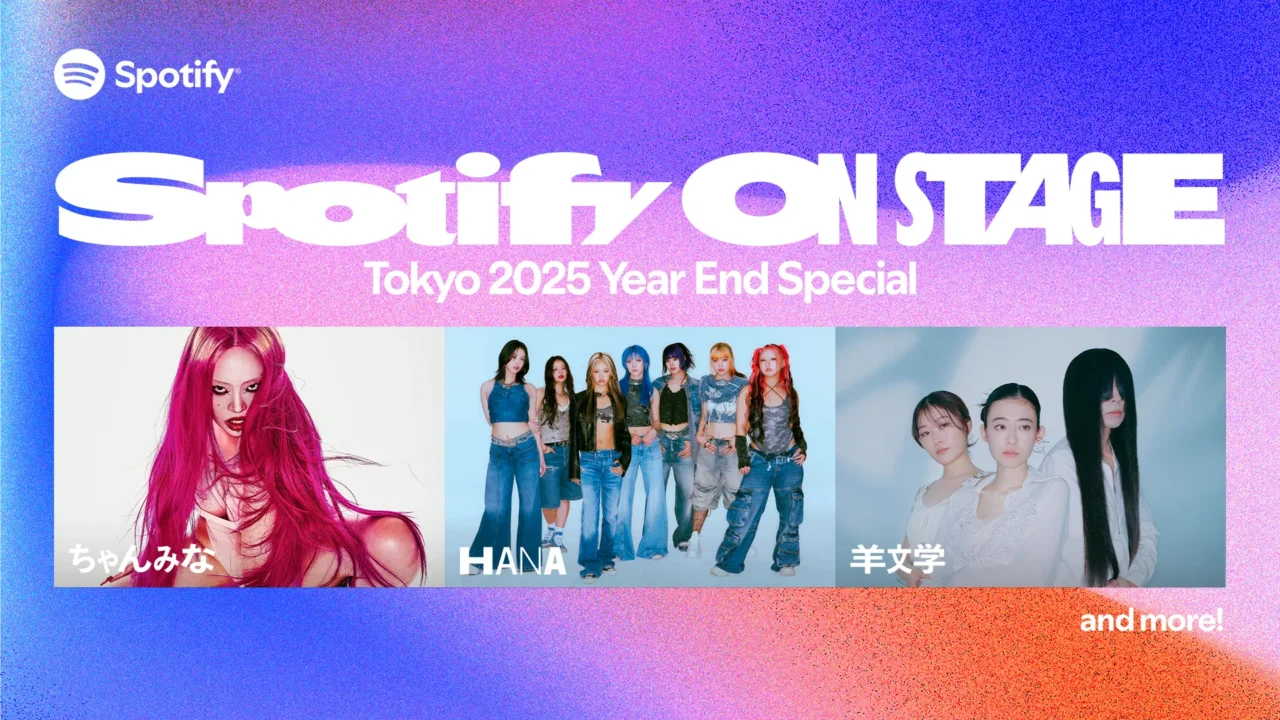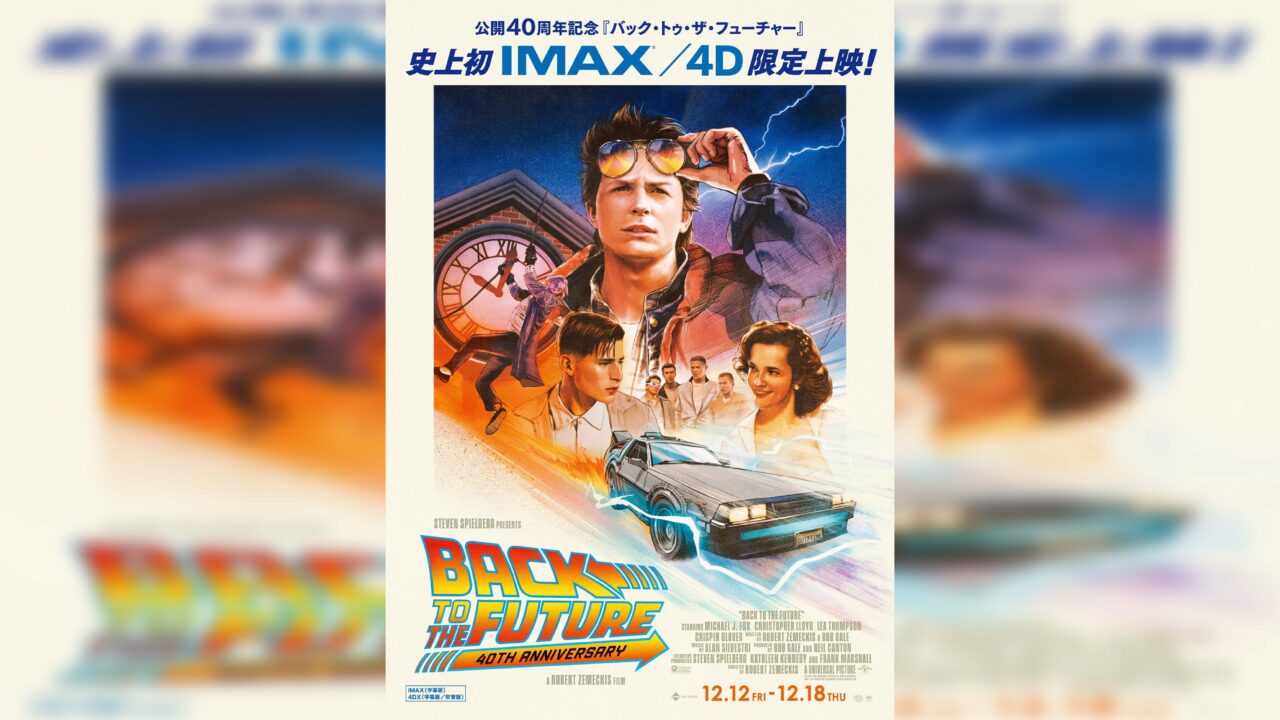Ever wondered how much you truly know about street art? The “Stream of Banksy Effect: The Evolution and Revolution of Street Art – Street Art (R)Evolution” exhibition at Shibuya Stream Hall in Tokyo is a rare, immersive experience that takes you on a journey through the origins, evolution, and current state of street art. It’s not just an exhibit – it’s a comprehensive lesson in the dynamic world of urban creativity.
INDEX
A Must-See for Art Lovers Beyond Street Art
Thanks to the influence of Banksy, street art has become a major presence in the contemporary art scene. This exhibition offers a unique opportunity to replace the vague idea of street art with a concrete viewing experience, helping you clarify what you think about it and what works you enjoy (or dislike).
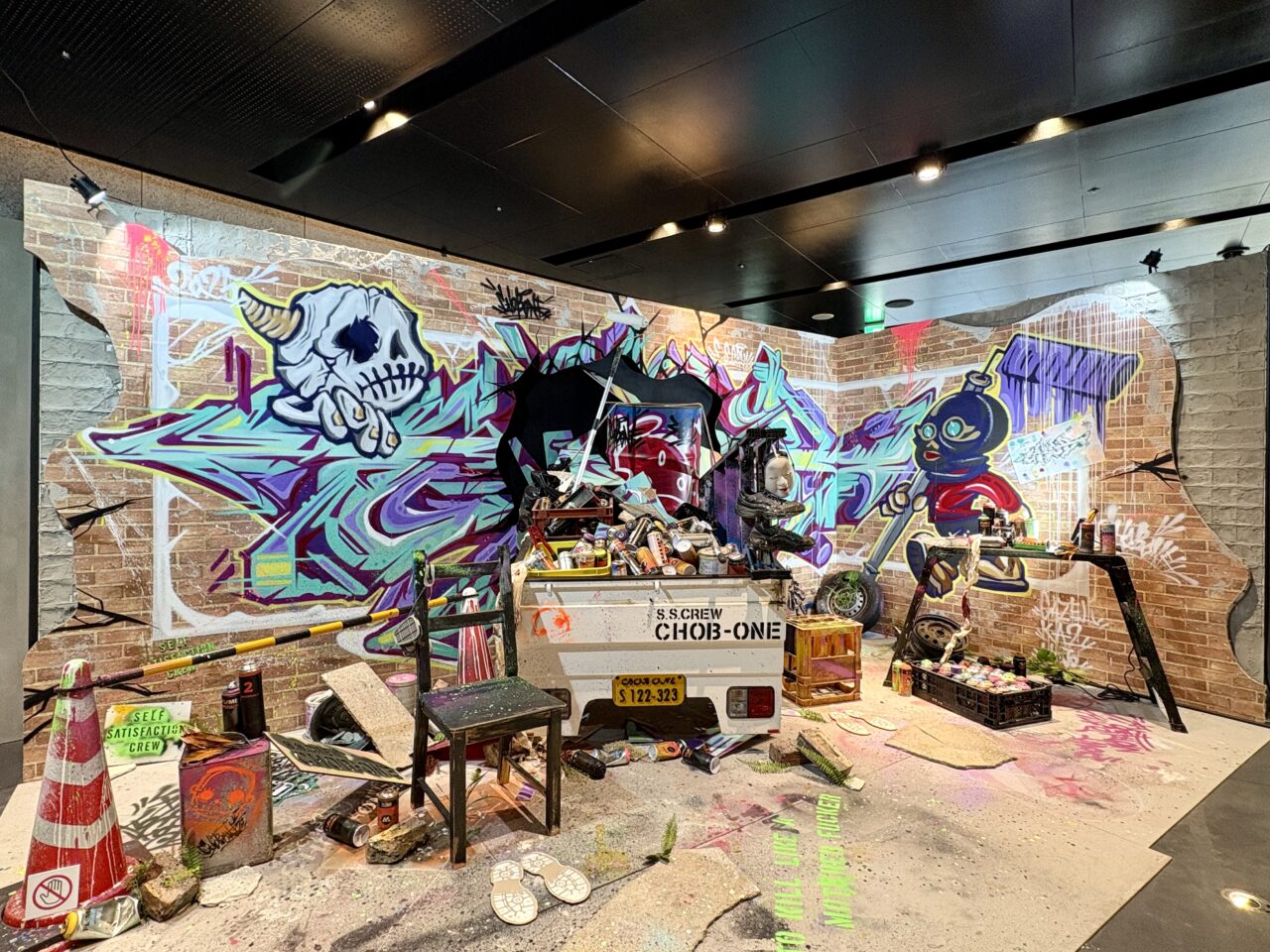
Personally, I believe this is a chance for art fans who have never considered street art to experience it. If you think of graffiti as just rebellious youth scribbling or illegal acts with no connection to you, this exhibition is especially for you! Maybe, in the end, we could find ourselves resonating more deeply with street art than we ever imagined.
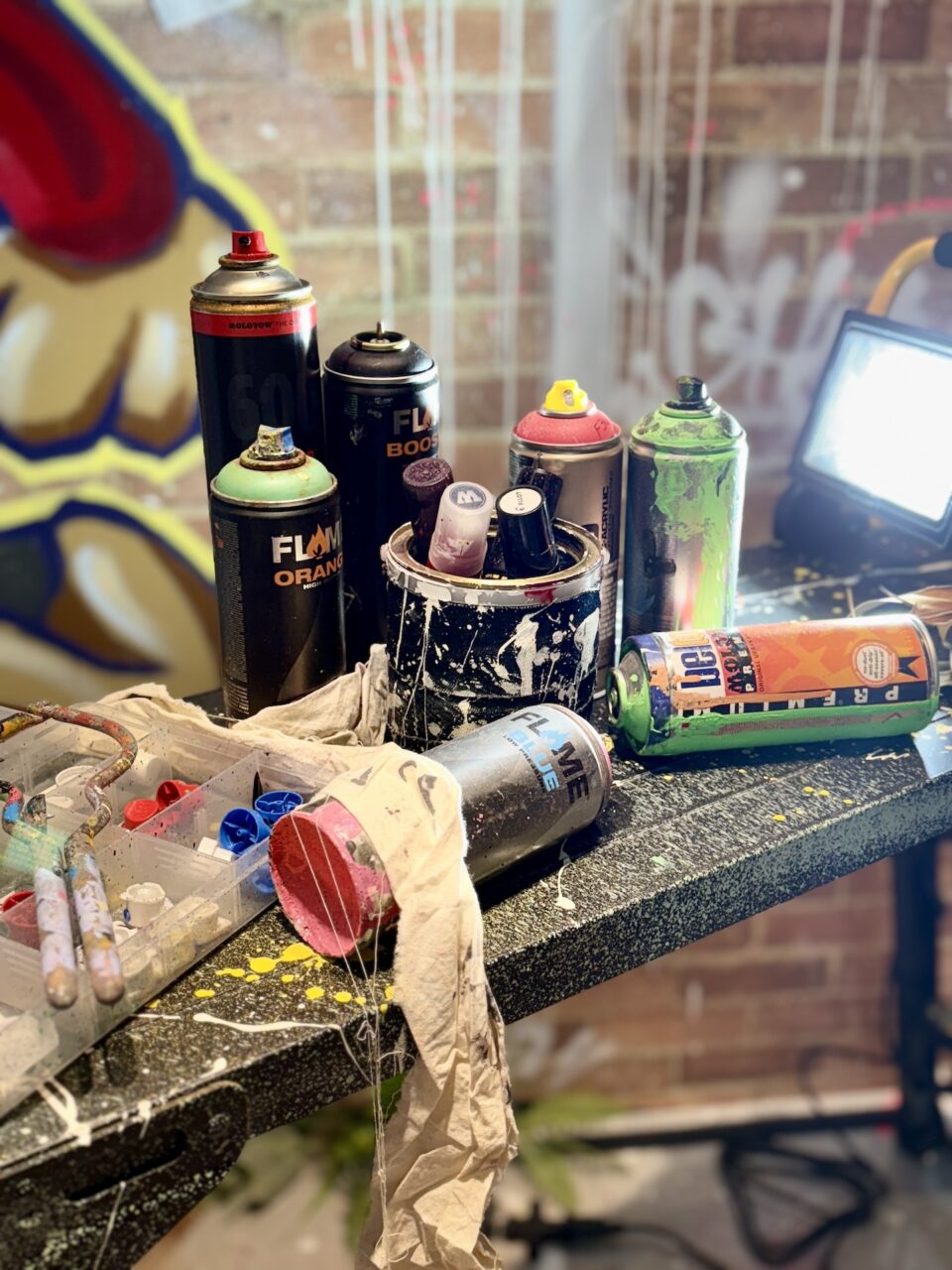
Everything placed in the photo booth is said to be a tool for creating graffiti art. When viewed together with the section displaying the tools later on, it provides a fascinating glimpse into the creative process.
INDEX
The Origins of Graffiti Art: A Form of Self-Expression for New York’s Youth
This exhibition is organized into about six sections, allowing visitors to follow the evolution of street art in roughly chronological order. Featuring 50 artists and approximately 100 works, the exhibition is quite extensive. It’s unfortunate that I can’t touch on every artist due to the length of this article, but below, I’ll highlight key points that seem to be particularly important for understanding the exhibition.
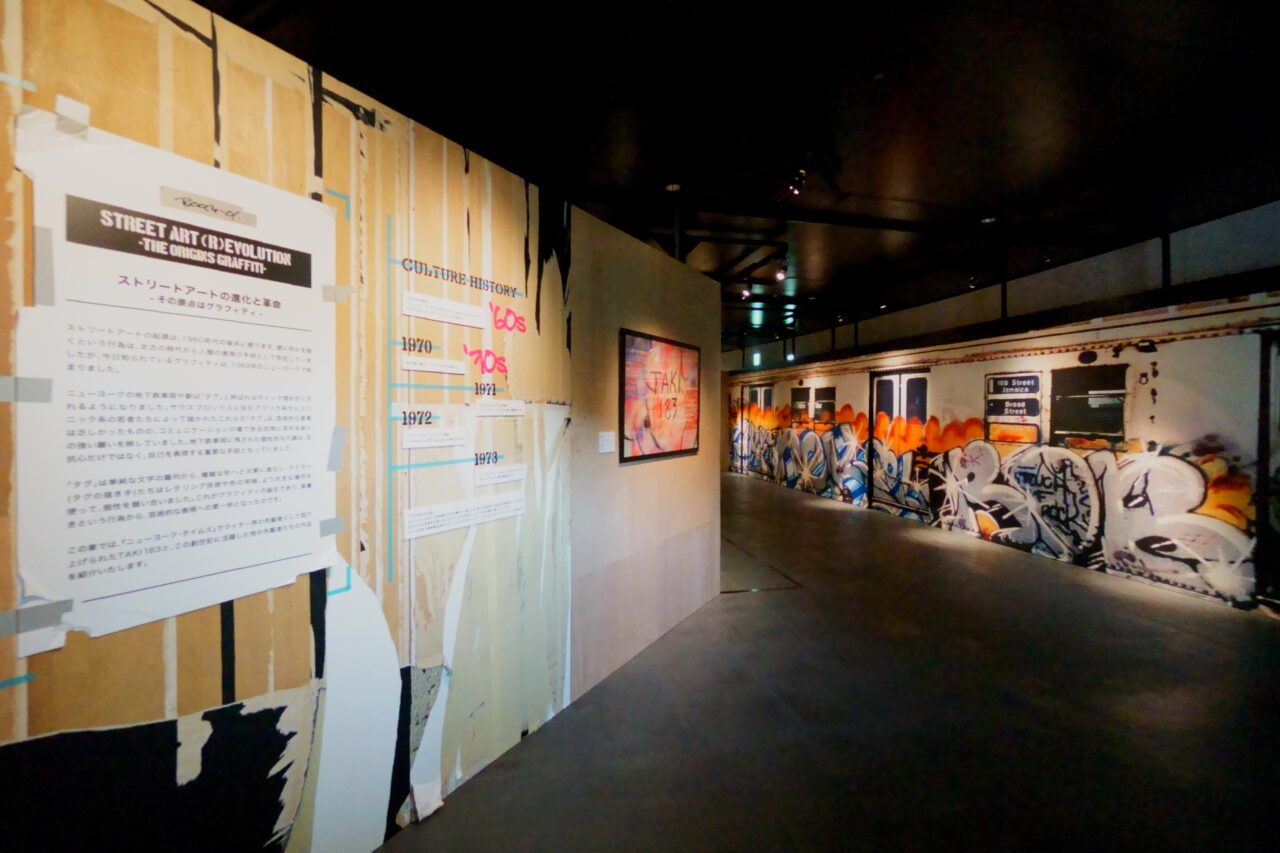
First, let’s look at the origin of it all: the “tag” born in New York in 1969. It was something like a sign, more art-like than actual art, drawn on subway cars and stations. I personally understood it as something similar to “I’m here!” written on tourist spots. However, this tag, which was a form of self-expression, began to symbolize territory among New York’s youth, evolving into an art battle where they competed with brighter colors and more intricate designs. This is when it started being called “graffiti art.” At the beginning of the exhibition, you can see works by TAKI183, who is known as one of the pioneers of tagging. Although it was later produced as a canvas artwork, the tag itself is simply something that was “just drawn.”
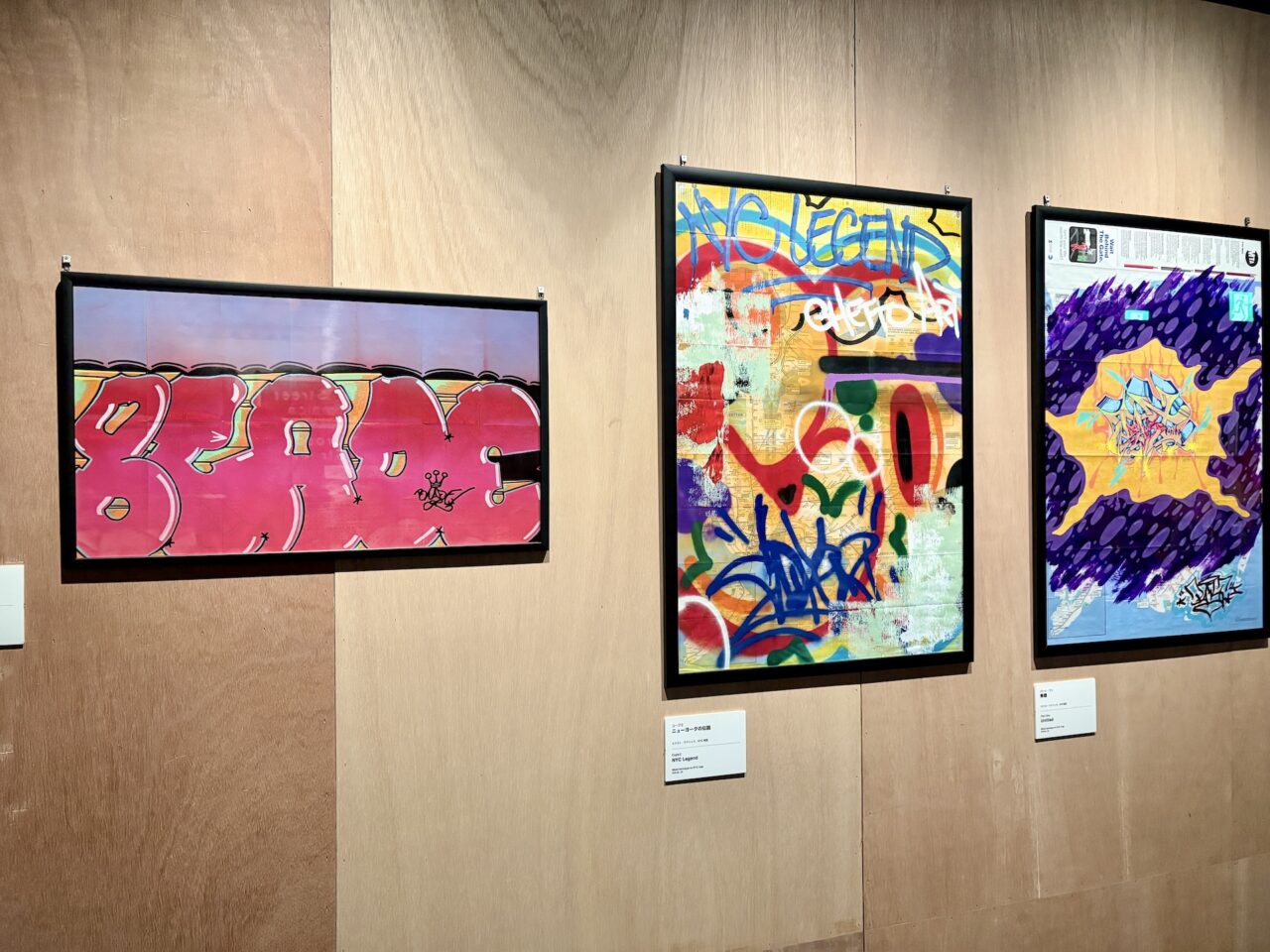
What’s particularly interesting are the early works of graffiti art at the beginning of the exhibition. Each piece is painted on a subway route map, similar to the free pamphlets you find at stations. With the roots of this art being in the “underground” nature of public spaces like the subway, the route maps were used as a medium for expression that wouldn’t be considered illegal. By the way, among the artists who came to Japan for this exhibition, some brought subway route maps from their own countries and used them as business cards, tagging them in the process. This episode really highlights how the act of tagging oneself and the local community lies at the core of graffiti as a creative activity.
INDEX
How Keith Haring and Basquiat Bridged Street and Art
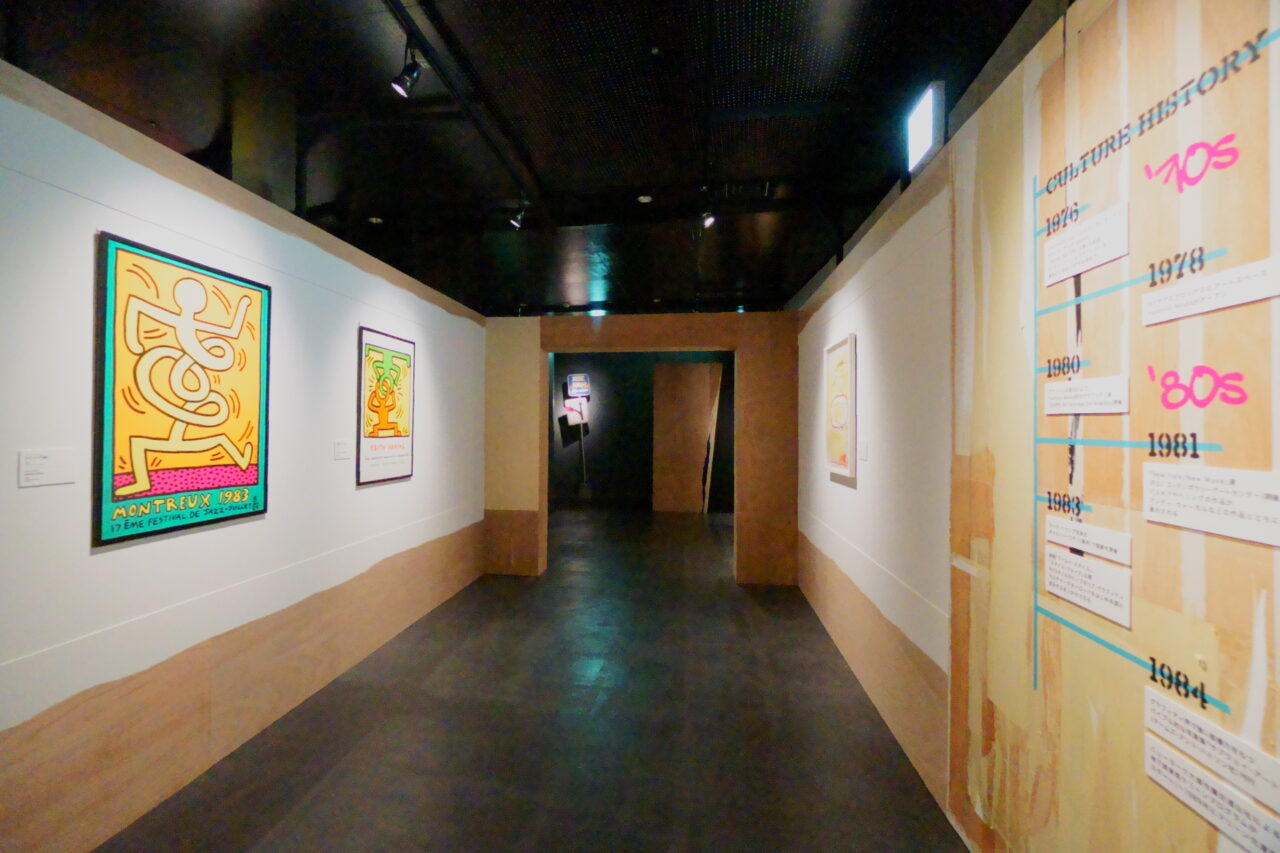
Graffiti art became more painterly as it evolved and was absorbed into the larger category of “street art.” The iconic figures that emerged from this era were Keith Haring and Jean-Michel Basquiat. Their arrival marked a turning point for street art, as it began to enter galleries and gain recognition as legitimate art, rather than just graffiti on street corners.
Though the exhibition features only a few works by Haring and Basquiat, their section stands out with gallery-style white walls, intuitively signaling the pivotal moment in the history of street art when this transition took place.


